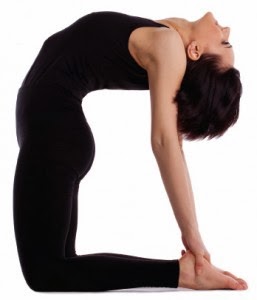Tuesday, March 29, 2016
Tip of the Week: Bikram for Balancing Emotions
Yoga has the power to unlock, heal and balance your emotions. For those of you who have a regular practice, you can probably attest to lying down in Savasana at one point with tears streaming down your face or smiling so hard your face hurts.
Though a sudden onset of emotions during a routine yoga session takes many practitioners by surprise, it’s really an important part of the discipline. That’s because there’s no differentiation between the mind, the body, and human emotions within yoga. They’re all connected, and, as such, they all affect each other. Yogis will tell you that when something weighs you down mentally, it'll likely weigh you down phyically, too. And that remains true whether you follow yoga’s tenets or not. For example, severe stress has a demonstrated effect on heart health, but within yoga specifically, certain body parts are believed to carry different types of emotions. As Sarah Powers wrote in the book Insight Yoga, “We may experience disappointment in a tight hip or fear as we settle into a long-held backbend. The longer we practice, the more we notice how varied our feelings are, how we can feel agitation one minute and elation the next, exuberance followed by despair.”
Poses that tap into tension in the hips, chest, and back seem to prompt emotional releases most often during yoga sessions. Frustration and anger could manifest in spinal tension, heartbreak and depression could linger in the chest, and emotional pain from the past could lie dormant in the hip flexors. These moves can help you confront such unresolved issues.
Bikram Yoga helps balance the emotions in several ways. Physiologically, regular practice harmonizes the nervous and endocrine systems, two systems which figure heavily in emotional well-being. In addition, practicing Bikram Yoga cultivates the mental faculties of faith, self-control, concentration, determination, and patience. As we become more aware of our inner life, we notice how events, interactions, and even the atmospheric pressure effect us. When we are aware, we can exercise choice in our response. This helps us balance our emotional life.
Triangle Pose: The farther you extend your torso to the right and stretch your arms, the more you challenge your hips to let go of tension.
Camel Pose: Because you make your heart so open (and vulnerable) in this pose, it often leads to dramatic emotional displays, from giggling to sobbing.
Bridge Pose: This pose is a gentler way to release emotions, because you slowly ease your body into it. The chest opening isn’t quite as stark, but it still makes a difference.
Spine Twist: Twisting the spine in either direction awakens your organs and abdominal muscles as well.
Savasana: This is a completely neutral pose that allows for total relaxation of the mind and body. Resting poses don’t tax the body, but they do cause you to center your thoughts, which can be very emotionally taxing for some people.
Using poses like these to move past mental and emotional blocks is part of moving forward in your yoga practice. Breathing deeply and staying centered in the pose are a healthy way to release such tensions. But if it gets to be too much, you should come out of the pose and allow yourself to experience the emotions fully—otherwise, it’s simply another means of suppression. Be sure to talk to your studio instructor for more insight into the phenomenon. After all, exploring and finding the balance between mind, body, and emotion is likely why you came to yoga in the first place.
Subscribe to:
Post Comments (Atom)


No comments:
Post a Comment
Note: Only a member of this blog may post a comment.